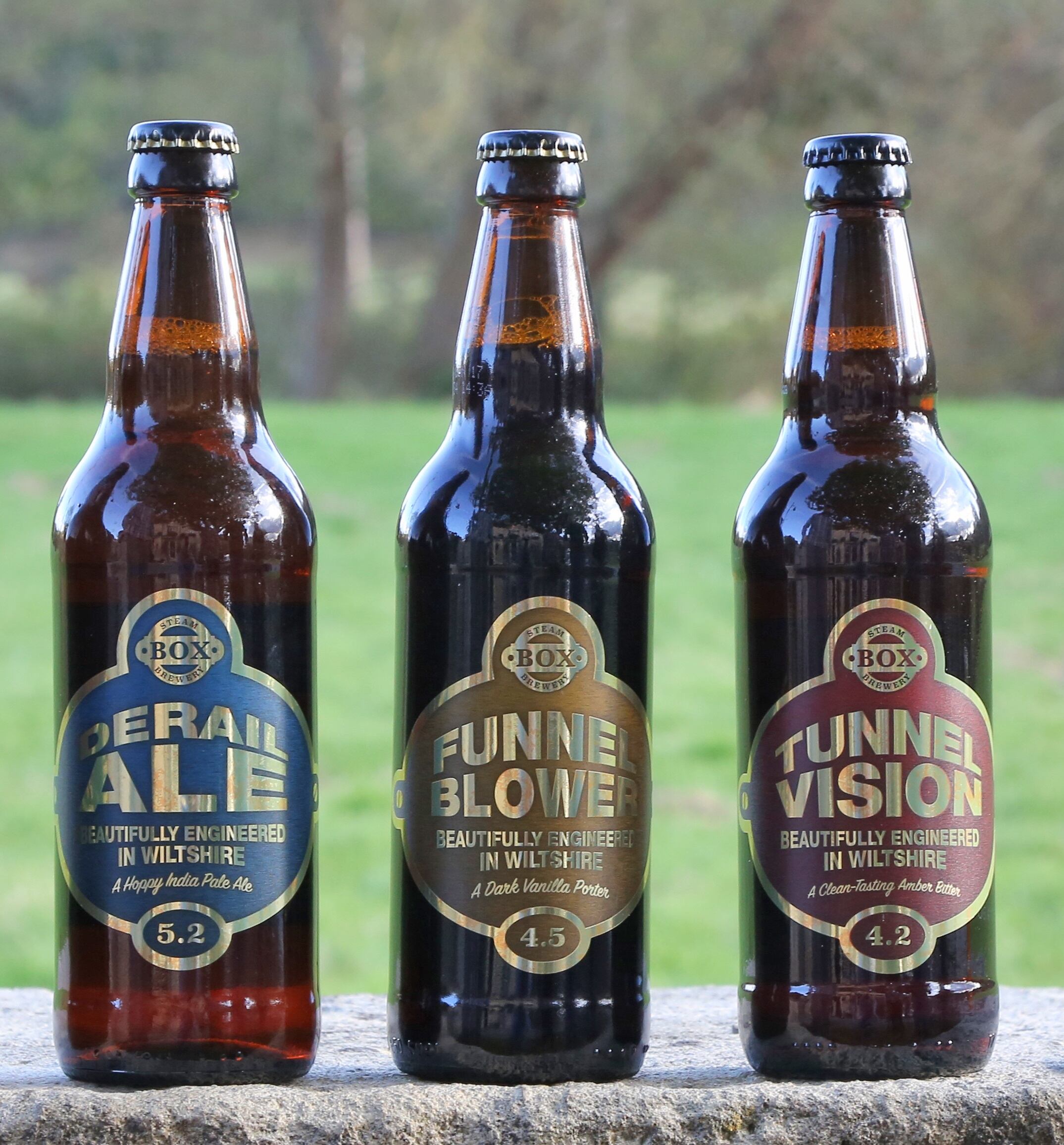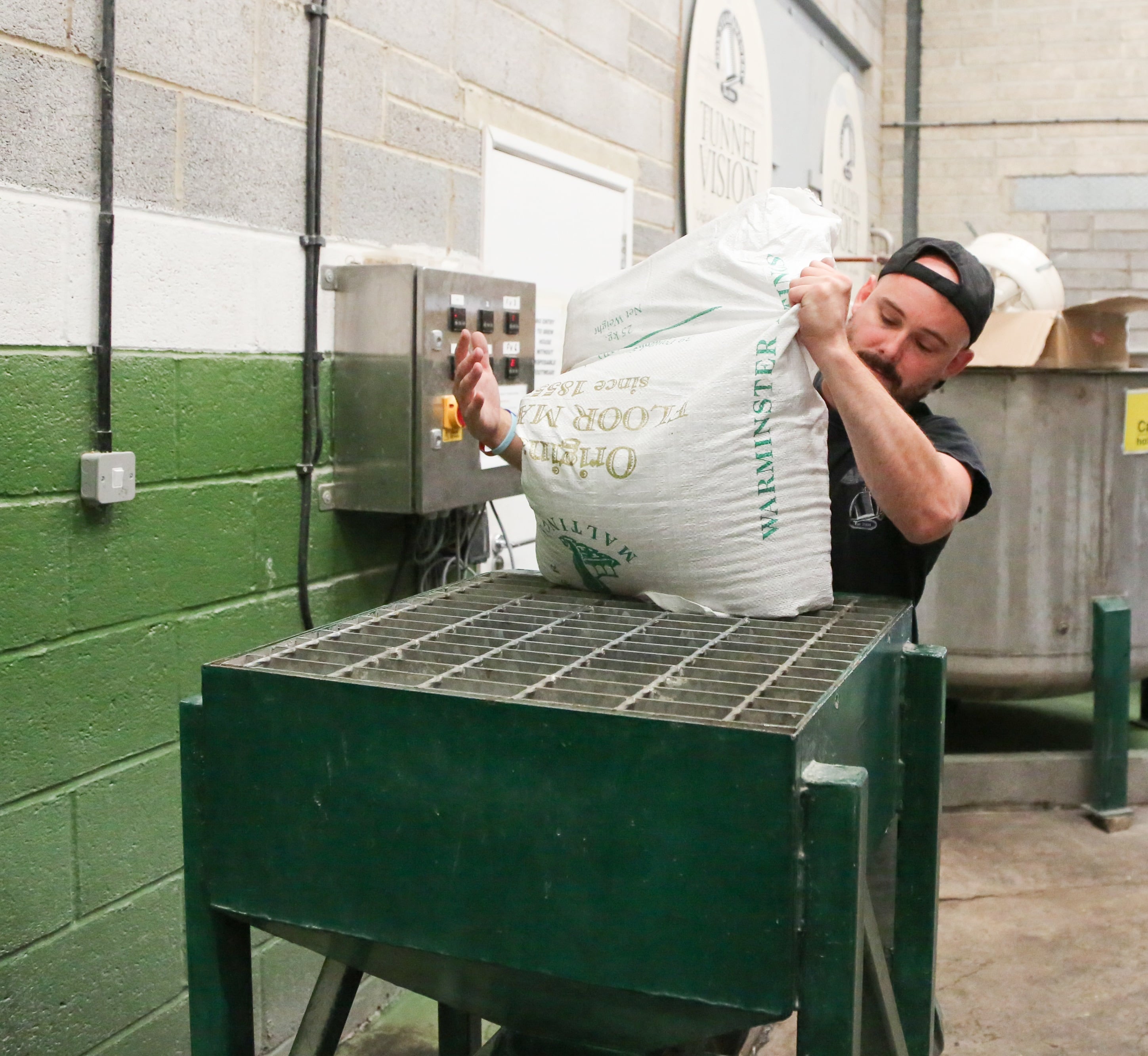Located in the Wiltshire countryside in the village of Box, the UK brewery was founded in 2004. It started life as a 10 cask microbrewery, before being acquired by the Roberts family in 2006 who started using steam brewing methods.
The brewery outgrew its premises in Box and moved to nearby Holt in 2011. Today, the 21-strong brewery team produces around 140,000 gallons of real ale a year in cask and bottle, and is about to break into UK supermarket giants Tesco and Asda.
Philip Downes, Master Brewer, explains the process
“The magic starts with the malting. We’re fortunate in having an abundant supply of locally grown and traditionally floor-malted Maris Otter barley, sourced from the nearby town of Warminster.
“Warminster Maltings operate one of the few remaining traditional floor maltings. Here, barley is steeped in water to trigger the natural germination of the grain before being loaded onto a floor where the maltster carefully turns the grain by hand to ensure even germination.
"We use steam to retain the subtly of flavours captured by the maltster"
“Then there’s the milling. After a relatively short period, growth in the ‘green malt’ is arrested by kilning.
"Depending on temperature, moisture and time, and with the skill of the maltster, a large range of flavours and colours can be achieved, from grassy notes of lightly kilned malts, biscuit notes in pale ale malts through to burnt, bitter and very dark roasted malts.
"The reason we use steam is to retain the subtly of flavours captured by the maltster. We then mill the malt to produce the ‘grist’.
Tunnel Vision
Box Steam Brewery produces porters & ales. Its flagship brews are Tunnel Vision, Piston Broke & Golden Bolt.
Beers are available in cask, bottle, box and keg direct from the brewery, and through a number of wholesalers & distributors.
They are served in pubs, bars & restaurants across the country, but in particular across Wiltshire, Bristol & Bath.
Bottles available direct from the brewery online, in the brewery shop, and on supermarket shelves and independent off-licences, including Aldi, Lidl & Majestic. Box Steam will also be listed in Tesco & Asda shortly.

“After milling comes mashing. The ‘mash tun’, a big vat, is pre-heated using surging steam from our energy efficient steam kettle. This is done to ensure a consistent temperature of 65 degrees.
“In the mash tun hot liquor (water with added minerals) and the grist are gently mixed to form the ‘goods’. Once the mash tun is filled, it’s left for an hour or so to enable the natural process to continue.
"Enzymes from the barley break down complex starch molecules into simple sugars to be consumed by the yeast to produce alcohol. The mash produces a ‘sweet wort’. More hot liquor is sprinkled over the grain (called sparging) to extract the goodness.
“After the mash has stood for the hour, the sweet wort is run off into a ‘whirlpool underback’. This ensures that only clear wort is transferred to the copper, to make the best ale.
“It’s at this point that our steam process comes into its own. There are four steam jackets on our copper and these are switched on as it fills. The steam boilers are used to drive the steam jackets on the copper. The copper is usually steaming as the running off from the underback finishes.
“Steam boiling avoids any charring of the delicate hops, which can happen with other methods of direct heating. The temperature of steam can also be controlled much more precisely.
“We add the first hops at this stage. The wort is vigorously boiled for an hour or so. During this time natural resins are extracted from the hops and their bitterness released. Second and late hop additions impart more flavour and aroma.
“The process also removes proteins which would otherwise cause a haze in the beer. We add seaweed derivative Irish Moss to assist this process. Boiling also makes the wort sterile.”

“Then we steer nature in the right direction. The boiled wort is cooled to 18°c using a heat exchanger and collected in our fermenting vessel. Cold liquor is used to cool the wort, gets heated in the exchanger and transferred into the hot liquor tanks ready for the next day’s brew.
“Yeast is added to the fermenter to begin fermentation. The yeast consumes the sugar from the malt to produce alcohol and carbon dioxide. Heat is given off as the yeast grows and the temperature of the brew is carefully controlled to allow flavours to develop slowly. After several days, when the yeast has produced the correct level of alcohol, the temperature is brought down to 10°c.

“Finally, our beer is either racked off into casks and left to condition for several days in a cold store, or it’s chilled to 0°c for bottling. Cask beer or ‘real ale’ carries a portion of yeast in it. Residual sugar from the fermentation is slowly consumed by this yeast in cask to produce natural carbonation or ‘condition’.
“When the beer is racked, isinglass finings made from the swim bladders of fish is added to ‘flocculate’ and ‘precipitate’ the yeast which settles as ‘lees’ in the belly of the cask after a 24-hour stand in the pub.
“And there you have it – a cracking pint, produced in sympathy with fine ingredients, and efficient use of energy.”
